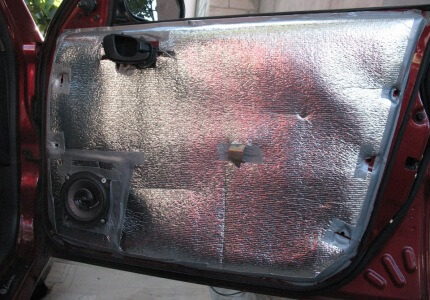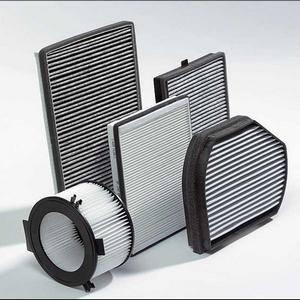
Car insulation
Content
A warm interior and a quick start of the car are two of the most pleasant things that allow you to drive without problems in the winter. Positive emotions from driving will not be able to spoil even traffic jams. So that in winter there are no unnecessary worries about your health and the condition of the car, it is worth it in advance insulate a car.
This will achieve maximum comfort when moving around the city and highways, providing a good mood for both the driver and passengers. To do this, it is necessary to insulate not only the interior, but also the "heart" of the car - the internal combustion engine. The always warm internal combustion engine will ensure a trouble-free start in the morning and safe driving on the roads, since all vehicle systems will function properly, and interior insulation will allow you to travel with maximum convenience.
Insulation of the car interior
The most common problem in interior insulation is drafts that appear after the rubber door seals are deformed. If they are replaced with whole ones, then the cabin will have a constant positive temperature, provided that after replacement the gaps between all parts of the car body will be uniform and not too large.
Pasting the body with soundproofing and heat materials (sound and heat insulation of the interior) will also make the interior warmer. How to install interior soundproofing using the VAZ 2112 as an example, see here.
It is worth noting that before starting this rather laborious procedure, it is necessary to correctly select the insulating material. Almost all of these products perfectly absorb moisture that constantly occurs in a car during rain, washing or in the form of fumes. However, there is a drawback: after a while, this “thermal insulation” will begin to rot because of which an unpleasant smell appears in the car. Therefore, you should purchase a product that will not only provide warmth to the cabin, but will not absorb water.
Warming of the internal combustion engine and the hood of a car
Sheltering the internal combustion engine with a felt blanket can result in a fire, therefore, if your region does not have very severe winters, then you can get by with the usual thermal protection of the hood. And for those car owners who live in places with winter temperatures over -25 ° C, we offer some of the safest options. car insulation.
Firstly, it should be clarified why the internal combustion engine of a car should definitely be insulated.
- due to the long warm-up of the internal combustion engine in the winter, there is a significant overrun of fuel, as well as faster wear of engine parts;
- a layer of ice on the bonnet can damage the paintwork.
Many drivers know that starting a very cold internal combustion engine leads to a negative impact on the life of this most important part of the car. This is due to the change at low temperatures in some properties of engine oil and gasoline/diesel fuel. With an increase in the viscosity of the oil, for example, it cannot immediately penetrate into the necessary remote ICE systems: starting the engine with such oil, for a certain time it will lack oil lubrication in its parts, which will cause rapid wear with constant friction.
Also, starting the internal combustion engine in winter is affected by the fact that gasoline begins to evaporate worse - this leads to a deterioration in the preparation of the fuel-air mixture inside the car. And the battery at temperatures below zero does not give the full capacity of its charge.
To avoid all of the above problems, advanced technologies suggest using several inventions that simplify the process of planting and operating a car in the winter:
- engine preheating: a device that warms up the engine before starting it. It allows you to save not only time, your nerves and strength, but also fuel, and also prevents premature wear of internal combustion engine parts and battery overload.
- battery insulation is simply a necessary measure in extreme cold, since a frozen mixture of distilled water and electrolyte should never be used until it is completely thawed, because when starting the starter, this icy liquid will release an explosive gas.
Having determined the main reasons why you should insulate not only the interior, but also the internal parts of the engine, you should choose the best option that is suitable both in terms of convenience and material capabilities.
Naturally, there are no ideal methods, they all have advantages and disadvantages.
For insulation, you need a sheet of this material of the right size and clips to fix the insulation on the hood. It is advisable to take it off in the summer.
The second option for ICE insulation is car blanket. this type of insulation can be made independently, having the necessary materials, or you can buy a ready-made version. For self-manufacturing, you will need: fiberglass and internal filler, or mullite-silica wool. These materials are used for insulation of oil and gas pipelines, as well as in refractory shields. Their low thermal conductivity and completely non-combustible composition allows them to withstand temperatures up to 12000 degrees, and also not be subjected to chemical attack by various technical fluids.
Of the most modern, technical "gadgets" for cars in terms of internal combustion engine insulation, two types of heaters for internal combustion engines can be distinguished:
- Electric heater;
- Autonomous preheater.
The electric heating of a car engine is a very convenient tool for maintaining the optimum temperature and preventing freezing of internal combustion engine parts, but it has, rather than a drawback, but a feature - it needs a power source of two hundred and twenty volts near the place where the car is stored. The time required for heating from this device ranges from twenty to forty minutes and requires manual activation.
Electric heaters
Electric heaters are ideal only when the car is in the garage at night, where you can connect to the 220 V network. All that is required is to simply install such a heater in the internal combustion engine, connecting it in a small cooling circle. There are elementary and more complicated:
- “Start” Turbo (PP 3.0 Universal No. 3) - 3820 r;
- Severs-M1, manufacturer "Leader", Tyumen (1,5 kW) - 1980 r;
- LF Bros Longfei, made in China (3,0 kW) - 2100 rubles.
If you turn to the service station for help, then electric-type preheaters, together with the installation, will cost approximately 5500 rubles.
Autonomous heaters
Autonomous heating systems are mostly either already installed or mounted additionally on the machine and operate exclusively from the on-board network. You can program a timer so that the heating turns on every morning at a certain time, or you can start it from the remote control.
Among the autonomous preheating systems, the following are most widely used:
- Webasto Thermo Top, Germany - up to 30 rubles (with installation from 000 rubles);
- Eberspracher Hydronic, Germany - an average of 35 rubles (with installation about 880 rubles);
- Binar 5S - 24 r (with installation up to 900 r).
The choice of a heater is a very crucial moment, since, for example, an autonomous heater has more advantages than an electric heater. One of the main ones, for example, is the presence of the “on / off” option for this heater several times at night or during the day, as well as the autonomy of this device, which does not require a permanent power supply.
At the moment, these methods are the most relevant and modern. Of course, the best and most reliable option would be a combination of all of the above methods. Question: "What is the best way to insulate your car in winter?” will disappear by itself. However, when installing any thermal insulation, you should know a few nuances:
- in order to prevent damage to the motor due to the ingress of insulation parts on the pulleys of the pump, generator, fan drive or under the belts, all parts of the insulation material should be fixed as securely as possible.
- Naturally, the air temperature is almost always low in winter, but there are days when it becomes +. At positive temperatures, it is necessary to partially open the thermal insulation for a greater influx of cold air, in order to prevent the internal combustion engine from overheating. To do this, make special valves on the heat-insulating material installed on the radiator, which will close and open without completely removing the heat insulation, and also have a secure fit both in the open and in the closed form.
- When attaching the thermal insulation, avoid contact with the exhaust manifold and components of the exhaust system.
- In order not to damage the paintwork surface of the body of your "favorite", the thermal insulation should be fixed with the subsequent possibility of its dismantling.
